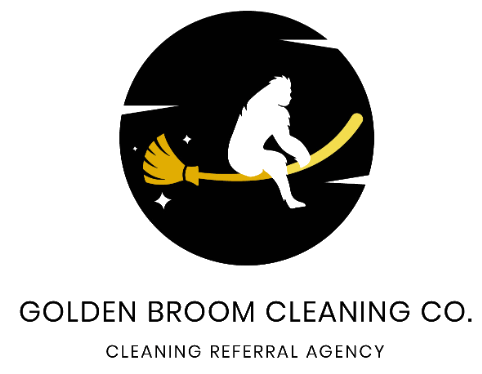Living in a cluttered space can feel like being in a storm of your own possessions. It’s easy to feel overwhelmed, especially when every corner seems filled with stuff you may not even remember keeping. But guess what? You’re not alone, and there’s a way out of the chaos!
Whether you’re a gentle collector or a self-described hoarder, tackling clutter can breathe fresh air into your home and mind. Imagine walking into your house and feeling peace instead of stress.
This post is all about breaking down the daunting task of cleaning into manageable steps. No judgment, no pressure—just simple, effective strategies to help you let go of what’s holding you back. Your goal isn’t perfection; it’s progress. So, roll up your sleeves, and let’s dive into creating a space that nourishes you.
Understanding Hoarding Disorder and Its Impact on House Cleaning
Hoarding disorder isn’t just about having too many belongings; it’s a genuine struggle that can affect one’s well-being and daily life. It’s when letting go of things feels impossible, often leading to cluttered living spaces.
This disorder doesn’t just make cleaning tough; it can also impact your health and relationships. Imagine constantly feeling anxious or embarrassed about how your home looks. These feelings can be overwhelming, making it hard even to start tidying up.
The Emotional Weight of Clutter
Clutter isn’t just physical. It can carry emotional weight, too. Items saved out of sentimentality or a fear of needing them someday often pile up until they’re more than just objects—they become barriers to a well-lived home.
Conquering these feelings and the mess they contribute to can seem daunting. But understanding the emotional connection can be the first step toward change. Recognizing the issue is pivotal in tackling the clutter.
It’s important to remember that you’re not simply cleaning a space; you’re reclaiming it. Acknowledging this can transform the process from an overwhelming task into a journey towards a healthier, happier living environment.
Creating a Customized Cleaning Plan for Hoarders
When tackling a space affected by hoarding disorder, a one-size-fits-all cleaning plan simply won’t cut it. Everyone’s relationship with their belongings is different. That’s why creating a personalized plan is essential.
Start by setting small, achievable goals. Focus on one room or even just a part of a room at a time. This can help prevent the process from becoming overwhelming.
It’s important to involve the person whose space you’re cleaning. Having open discussions about what items are most meaningful to them can help guide decisions on what to keep and what to let go. Respect and empathy are key here.
Consider bringing in professionals who specialize in hoarding situations. They can provide the expertise and support needed to manage both the physical and emotional aspects of the situation.
Remember that progress takes time. Celebrate small victories along the way. Each step forward, no matter how minor it may seem, contributes to an improved living space and a healthier living environment.

Organizing Tips to Simplify Cleaning in Hoarding Situations
Let’s dive into some organizing tips that can make your cleaning mission a bit easier. First up, sorting. Try creating three main categories: keep, donate, and discard. This simple method helps clarify decisions and reduces clutter one step at a time.
Label and Store
Labeling can be a game-changer. Clear labels on boxes or bins can make things much easier to find and store. Try using transparent containers, too, so you can see what’s inside without opening them.
Grouping similar items together also works wonders. By storing like items with each other, you can create a sense of order and make spaces feel less chaotic.
Keep pathways clear by avoiding piling up items in hallways or main living areas. It not only makes cleaning easier but ensures there’s a safe and accessible path through the home.
Lastly, make sure to regularly revisit storage spaces. This helps reassess what items are truly needed and motivates letting go of things that no longer serve their purpose.
These organizing tips, while simple, can make a world of difference in managing spaces overwhelmed by clutter. Enabling more efficient cleaning not only reduces stress but builds a sense of accomplishment.
Identifying Potential Hazards and Safety Measures During Cleanup
Cleaning up a hoarder’s home can feel like an adventure through uncharted territories, but safety should always come first. It’s essential to keep an eye out for any potential hazards that might pop up during the process.
Watch out for structural problems like weak floors or ceilings. These can be hidden under piles of stuff and pose serious risks, so always be cautious when moving around and shifting heavy items.
Personal Protective Gear is Key
Make sure you have gloves, masks, and sturdy shoes on hand. You might encounter mold, dust, or even pests, so it’s wise to protect yourself from anything that might cause harm.
Be extra cautious with sharp objects like broken glass or rusty nails, which can easily be hiding in cluttered areas. A first-aid kit is a useful companion to have nearby, just in case of minor accidents.
Also, consider the electrical systems that might be overloaded or hidden behind stacks of items. Unplug appliances before moving them to avoid any chance of electrical hazards.
By recognizing these potential dangers ahead of time and equipping yourself with the right protective gear, you can tackle even the most challenging of clean-ups with confidence and peace of mind.
Effective Ways to Maintain a Clean and Clutter-Free Home After Cleaning
Once your home is spick-and-span, the challenge is keeping it that way. Maintaining a clutter-free space can feel like a full-time job, but with a few handy tips, it can be a breeze!
Set Simple Daily Habits
Start by adopting small daily habits. For example, making your bed every morning can set a positive tone for the day and make your bedroom look instantly tidier. A quick nightly sweep through the living areas to put things back in their place can prevent clutter from creeping back in.
Getting rid of items you no longer need or use is a game-changer. Aim for a one-in, one-out rule—if something new comes into the home, something old should leave. This simple strategy helps maintain balance and prevents accumulation.
Give each room a specific purpose and stick to it. For instance, keep work-related items out of your relaxing spaces like the bedroom. This clear boundary helps both in organizing your thoughts and in keeping spaces clutter-free.
Regular Decluttering Sessions
Set regular dates for mini-decluttering sessions. Target specific areas or categories—like your closet or pantry—and tackle these small tasks rather than an overwhelming project. Not only is this approach less daunting, but it also creates a continuous cycle of maintaining order.
By integrating these habits and strategies into your routine, your home can remain a tidy, welcoming haven without too much effort. Remember, consistency is key, and even tiny changes can make a big difference!
The Bottom Line: Celebrating Progress and Encouraging Sustainability
Wrapping up, it’s important to acknowledge the progress you’ve made. Every bit of tidying or organizing is a step towards a more harmonious living environment. Don’t underestimate the power of small victories!
While keeping your home clean and clutter-free, remember that consistency is your best friend. Small, regular efforts are far more effective than occasional, overwhelming clean-ups. By integrating simple daily habits, like making your bed or returning items to their rightful place, maintaining cleanliness becomes second nature.
Not to mention, it’s all about sustainability—an approach that fits seamlessly into your lifestyle. Embrace a mindset of balance between acquiring new things and letting go of the old. The one-in, one-out practice is a great way to keep your space not only neat but also stress-free.
Finally, recognize that your home is a reflection of you. Celebrate the order and tranquility you’ve created, and take pride in how far you’ve come. A clutter-free space isn’t just about cleanliness; it’s about creating an environment where you can relax, recharge, and live your best life.
So, as you continue this journey, focus on the joy and peace a tidy home brings. Enjoy the small moments of satisfaction and keep nurturing your space with love and care. With these practices, you’ll find that maintaining a clean and clutter-free home isn’t just a task—it’s a rewarding lifestyle choice.
